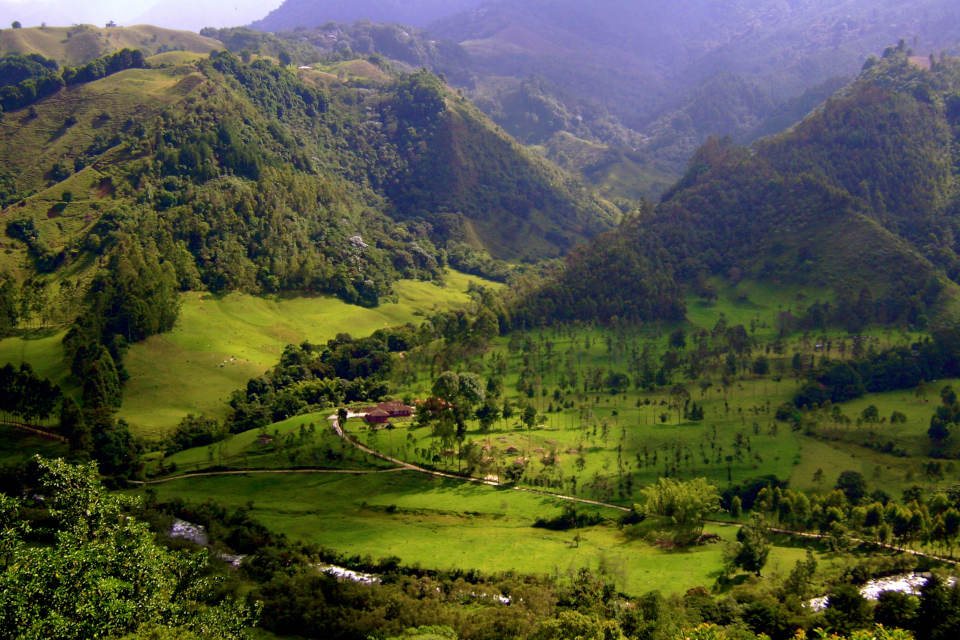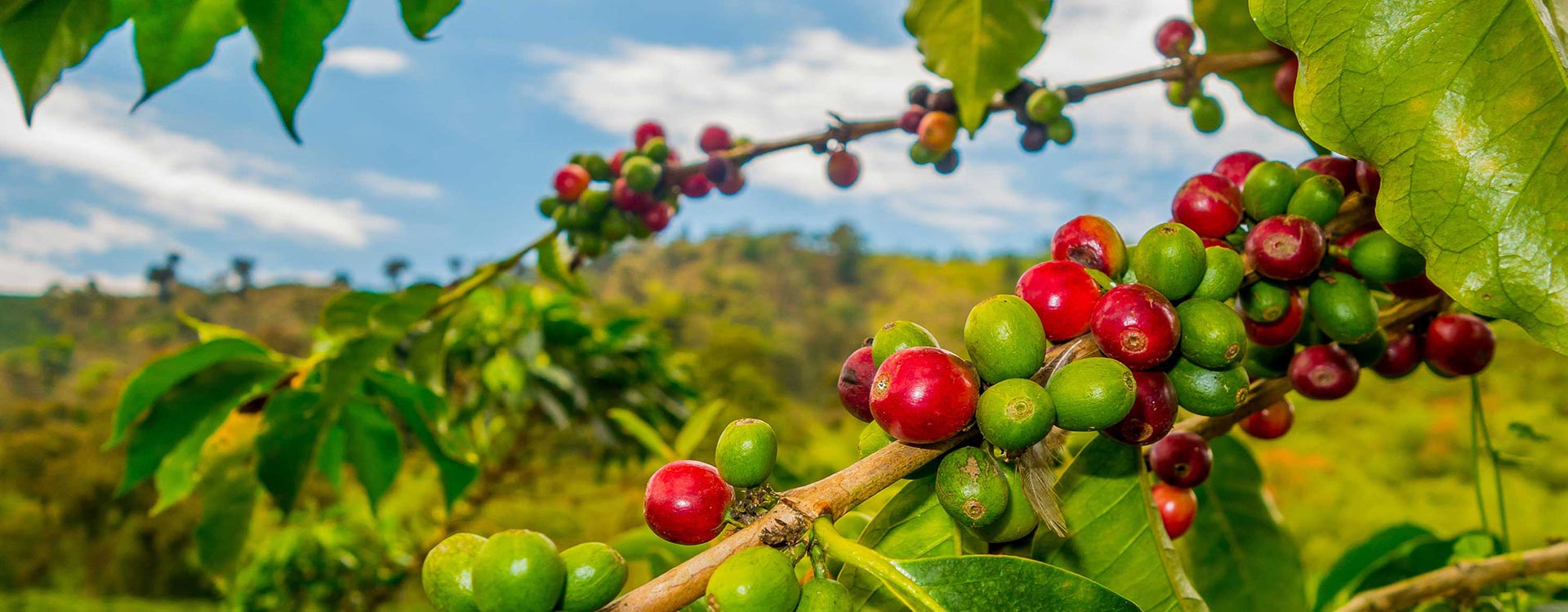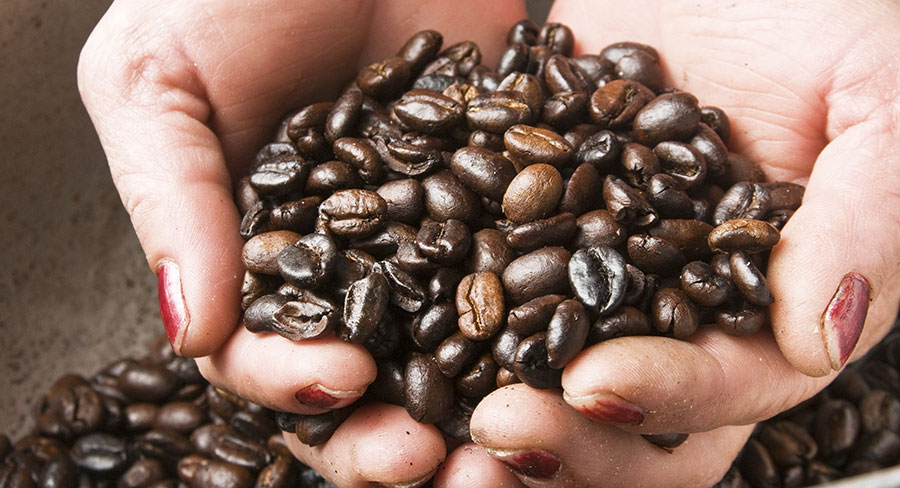MENUMENU

Reading time: 14 mins
Nestled amidst the verdant slopes of Colombia lies the famed Coffee Triangle, a region renowned for producing some of the world’s most exquisite beans for the perfect cup of java. With its rich aroma and impressive flavor, Colombian coffee has etched a distinct mark on the global palate, elevating the nation’s status in the coffee-producing echelons. Unsurprisingly, Colombia’s Coffee Triangle has become a popular spot to see, smell, and savor the enchanting characteristics of this iconic bean.
In this comprehensive guide, we’ll provide an overview of this coffee paradise and what to expect when it comes to experiencing the myriad of things available in Colombia’s Coffee Triangle. Whether you’re a seasoned coffee connoisseur or a curious traveler looking to get more acquainted with Colombia, prepare to immerse yourself in a world where every little town and coffee farm is a book, and every bean tells a story!
Colombia’s Coffee Triangle is situated in the country’s western region, between Medellin, Bogota, and Cali. Known as the Eje Cafetero (Coffee Axis) or Paisaje Cultural Cafetero (Coffee Cultural Landscape) in Spanish, the region is also colloquially called the Coffee Zone or even the Coffee Belt in English. It is a stunning expanse with rolling green hills and gorgeous farmland punctuated by colorful, historical haciendas (ranches) and quaint little towns. It is often referred to as a “triangle” in English because the best coffee tours available will take you through the core of the coffee region demarcated by the departments of Caldas, Risaralda, and Quindio—the three of which more or less form a triangle when you connect a line between them and their respective cities of Manizales, Pereira, and Armenia.
Economically speaking, Colombia’s Coffee Triangle is the heartland of the country’s coffee production and has earned a reputation for producing some of the world’s best Arabica coffee beans, largely thanks to the region’s optimal altitude, climate and volcanic soil. The region also has substantial cultural and historical importance. Coffee production has been around in Colombia for some 200-300, meaning there’s been considerable time for history to develop around its production. Consequently, the region is also home to century-long traditions, ranches, and towns, each with its own story. Recognizing the region’s historical significance, UNESCO designated Colombia’s Coffee Triangle a UNESCO World Heritage Site in 2011.

Colombian coffee plants
As a result of the above characteristics, it’s no surprise that the Coffee Triangle Region in Colombia has become the equivalent of a “wine country” (akin to what exists in places like California, Bordeaux, Tuscany, and Rioja). The noticeable difference is that, instead of perusing vineyards and sampling a medley of wines, you’re doing the same thing but with coffee plantations and freshly brewed java. Countless Coffee Triangle Tours now dominate the scene, each providing insight of varying degrees into cultivating the bean to brewing and serving it right in front of you, making it one of the best places to visit in Colombia.
Not only that, but a tour through the region goes even further by providing visitors with a unique and wholesome immersion into one of Colombia’s most iconic national identities and cultures. A Coffee Triangle Tour in Colombia isn’t solely about the bean and its end product but also about the people, towns, and landscapes surrounding this invigorating crop. Admiring the colorful buildings that adorn the quaint little towns inside the Triangle, walking under some of the tallest palms in the world, and getting a real sense of what the people and culture are like are all features of a typical Coffee Triangle itinerary. A walk down any of the towns is a trip back in time, where you’ll get a taste of Colombia’s colonial era. Additionally, should your timing be right, you’ll get to experience a variety of National Festivals in certain towns that celebrate the regional culture and, not surprisingly, the area’s coffee, too!
Moreover, nature lovers will be astounded by the sheer amount of life that can be experienced in the region. Given its unique location nestled within the verdant folds of the Andean mountains, this region boasts a plethora of flora and fauna—a testament to Colombia’s position as one of the world’s most biodiverse countries. From hummingbirds that flit amongst the coffee plants to vibrant orchids that adorn the landscape, the Coffee Triangle is a living mosaic of nature’s splendor.
For a comprehensive exploration, including visits to coffee farms, tasting sessions, nature hikes, and soaking in the local culture, a stay of 4 to 5 days is recommended. However, limited-time travelers can still gain a rich experience with a shorter stay of 2 to 3 days, focusing on key highlights.
Salento
Salento, nestled in the heart of Colombia’s Coffee Triangle, is a captivating town known for its vibrant traditional architecture and scenic beauty. As a hotspot for travelers, it boasts an array of restaurants, coffee tours, and picturesque viewpoints, making it a favorite for tourists and a global community of retirees. The town’s World Heritage-listed center showcases architectural wonders like the Church of Nuestra Señora del Carmen, while the streets remain adorned with colorful buildings featuring Baroque doors and balconies that exude charm. Distinctive inner courtyards in many homes, typical of the Antioquian style, further enhance Salento’s allure. Visitors can easily explore this charming town by skiing, cycling, or horseback riding.
Pijao
Pijao, a lesser-known gem in Colombia’s Coffee Triangle, offers visitors an authentic immersion into the country’s rich coffee culture. Nestled amidst verdant hills and coffee plantations, this tranquil town remains untouched by the bustle of mainstream tourism, allowing travelers a genuine experience. Here, one can relish the slow-paced town life, partake in traditional coffee rituals, and engage with friendly locals who proudly share their heritage. Its scenic landscapes are a serene backdrop to the quaint streets and architecture that speak of Colombia’s storied past. Pijao is a destination for those seeking both relaxation and cultural connection in the heart of Colombia’s coffee country, making it one of the best South American countries to visit.
The best time to visit the Coffee Triangle region in Colombia is during its dry seasons, which occur from December to March and July to August. During these periods, visitors can expect pleasant temperatures, minimal rainfall, and clearer skies, making it ideal for coffee plantation tours, sightseeing, and soaking in the region’s lush landscapes. However, even during the wetter months, rains are typically short-lived, allowing for continued exploration with just a bit more preparation.
January – Manizales Fair: A month-long event with bullfights, cultural performances, horse parades, and crafts displays.
June – National Coffee Festival: Known for its iconic “Yipao” (Jeep parades. Yes, Jeep—the automobile—parades!), where owners showcase the capacity and durability of their vehicles, galvanizing the Jeep (Willys model, specifically) culture.
August – Harvest Festivals: Featuring a parade, international food fest, concerts, local artists, and markets highlighting local goods.
September – Festival of Flavors, Sounds, and Knowledge: Held in Pijao, it celebrates fresh coffee, local cuisines, and the area’s evolving distinctiveness.
October (usually) – Festival of the Softest Coffee in the World: Held annually in the city of Pereira, this festival celebrates the coffee of the region, which is often touted as the “softest” (a term indicating its mild flavor) in the world. The event includes coffee-tasting sessions, cultural performances, and more, all dedicated to the region’s prized produce.
December – National Candles and Lanterns Contest: A Christmas fest in Quimbaya illuminated by intricate paper lanterns. Crafted by locals, the streets come alive with lights. Given the large crowds during this time, an overnight stay is recommended to appreciate the festivities properly.
When visiting the Coffee Triangle Region in Colombia, it’s essential to be prepared for varied climates due to its mountainous terrain. Here’s a guide on the essentials of what to pack and wear:
Compared to more modest locales, metropolitan areas like Manizales, Armenia, and Pereira boast a diverse range of dining, shopping, and cultural festivities. In these popular cities in Colombia’s Coffee Triangle, you can take a “lighter” (compared to a proper Coffee Tour) dive into coffee with sessions at numerous cafes that briefly unpack the journey from bean to brew. A short trip from Manizales takes you to therapeutic hot springs, including the renowned Termales San Vicente in Santa Rosa.
Navigating the Coffee Triangle is a breeze. Its compact nature means key attractions are closely knit, with frequent bus services bridging the gaps. Moreover, many tour operators and accommodations offer tailored transport services or packaged tour deals. Here’s a breakdown of your options:
Accessing this region from other Colombian areas is straightforward, too, given that the trio of main cities—Armenia, Pereira, and Manizales—each boasts a regional airport. Conveniently, these airports host frequent flights from Colombia’s primary cities at affordable rates.
Each farm (listed in no particular order) offers a unique perspective on the region’s rich coffee culture for those venturing into Colombia’s Coffee Triangle.
From comprehensive plantation tours that walk you through the entire seed-to-cup process to interactive experiences where you can engage in activities like bean picking or coffee roasting, there’s much to offer. Some farms provide an in-depth look into sustainable farming and organic practices, while others focus on the traditions and history of coffee cultivation in the region. Additionally, several tours culminate in tasting sessions, allowing you to savor the rich, fresh flavors of locally produced brews. Whether you’re a coffee aficionado or a curious traveler, the Coffee Triangle promises a blend of education, tradition, and sensory delight.
With its deep roots in the nation’s history, Colombian coffee has evolved to become one of the country’s most significant exports and cultural symbols. The journey of coffee cultivation in Colombia began in the early 18th century, likely introduced by Jesuit priests. Since then, it flourished due to the country’s favorable mountainous terrain and climate. Colombian coffee’s global acclaim lies in its consistently high-quality beans, characterized by a mild, well-balanced flavor profile with a hint of nuttiness.
The combination of Arabica beans, grown in the unique Andean conditions, and the meticulous harvesting methods employed by local farmers ensures a premium product. Today, Colombia’s coffee is not just a drink but a testament to the nation’s rich heritage and dedication to excellence in cultivation.

Coffee beans in Colombia
As you journey through Colombia’s Coffee Triangle, you’ll quickly find that it’s not just the taste of freshly brewed coffee that takes the spotlight but the spirit of a beautiful region steeped in tradition and passion. The verdant mountains, the extraordinary care given to the coffee plantations, and the stories emanating from every inkling of human civilization in the Triangle convey a tale of resilience, culture, and pride. This haven, where the Andean slopes cradle the world’s finest beans and even the tallest palms, invites travelers not just to visit but to immerse themselves in all its wonders.
Whether you’re a coffee connoisseur or a curious traveler, the Coffee Triangle offers more than a sensory experience—it’s a soulful voyage into the heart of Colombia. As you sip that next cup of Colombian brew, remember the magic, history, and hands that have shaped its journey from bean to your cup, and revel in the views of this spectacular region! Start planning your journey there with the help of our seasoned Destination Experts today!